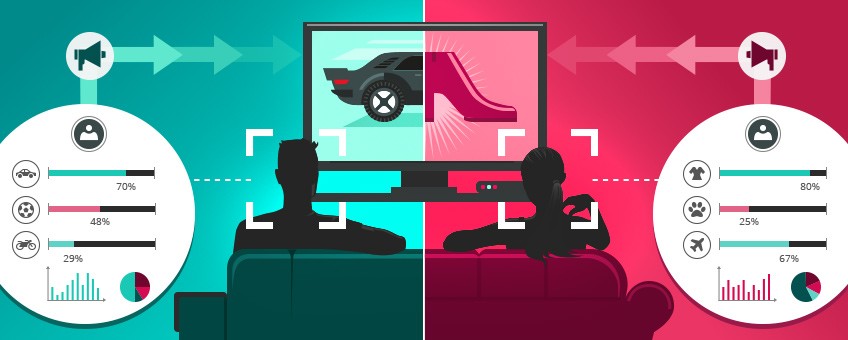In the previous post, our AdTech experts lifted the veil on what addressable is and on its promise to shape TV advertising, bringing tangible benefits for brands, publishers, and viewers. Now, let’s have a look at the barriers that stand in the way of addressable TV and see how the landscape is changing as cable operators strive to expand the coverage of addressable technology.
The Challenges of Addressable TV
As with any nascent technology, the rise of addressable advertising is accompanied by several challenges.
Number of addressable STBs. Not all set-top boxes can deliver addressable inventory. According to 4A’s report, only 30% of US households can be targeted this way, but the number is steadily growing as cable companies are swapping out those older, less-advanced set-top boxes.
Limited measurement capabilities of STBs. With many outdated set-top boxes still in place, data measurement is challenged, too. STBs were never designed to be measurement devices, said Dave Morgan, CEO at Simulmedia, a media marketing firm that licenses data from set-top box providers. If his estimate is correct, only 50-65% of the installed boxes can measure exact viewing.
Lack of standardization in STB data collection. How do we count impressions? What is an impression, anyway? How long should a set-top box remain on a channel to count the activity as an impression? As long as data collection methods vary across different STB manufacturers, significant inconsistencies may arise in how data is measured and delivered.
Targeting at the individual level. While addressable allows bringing targeted commercials to the household level, tracking the viewing of individual household members is still questionable. Which of the members is watching the TV now? And since the STB is always on, how do we know when they stop watching?
Lack of automation. Buying and selling of addressable TV ads have been manual, but this is beginning to change as some impressions are now available for programmatic purchase.
Non-standardized ad delivery technology. With operators using different equipment and software, running an addressable campaign across multiple companies can be a nightmare. Even within a single operator, getting one commercial to household A and another commercial to household B is still complicated and time-consuming. Here is how Michael Bologna, President at MODI Media, explains it:
…you have to determine who is your real customer segment, then you have to match data against subscriber files and determine what percent of the universe is that segment but it’s got to be done across five cable systems who all use different technology, data sources and back end. To get that 5 million subset of the 42 million requires conversations and phone calls with 5-6 different systems all operating in different fashions.
In their report, Deloitte uncovers the problem of matching disparate data sets in more detail:
Each data set may use different metadata tags or field descriptions. For example the parameters for income levels may vary from one data set to another. Aligning metadata across multiple data sets may be so time-consuming that it may be cheaper simply to allow for a proportion of wastage. Rather than deploy a team to analyse data, an advertiser could simply buy more air time.
Adoption
Due to the above-mentioned complications, growth in addressable TV advertising has been slow, but steady. However, one thing is certain: it isn’t on the way, it has already arrived. And the landscape is shifting in its favor, considering advertisers’ growing desire to reach targeted audiences more effectively.
According to a survey by Adweek BrandShare and AT&T AdWorks, nearly 60% of US advertisers are either using or plan to use addressable in 2017. Moreover, nearly 75% of marketers are willing to pay higher CPMs for better targeting.
Success Story
Addressable TV advertising has already had its successes. As Visible World’s study of 144 cable operator marketing campaigns showed, “ads that targeted their message to the right subscribers got a 70% better conversion rate than their overall campaign results”. In the light of these findings, CEO Seth Haberman believes the ability “to target the right message to the right home is the single biggest opportunity awaiting the television advertising industry”.
Addressable proved to be efficient for top advertisers in automotive, finance, CPG, and other industries. For example, setting out to market its new Prius Prime, Toyota targeted a specific consumer: “tech-savvy, knowledge-hungry drivers ages 18-49 with household incomes of $75,000 or more and who tend to be environmentally conscious but also economical”. Instead of running a national TV campaign, the marketers opted for addressable TV buys. This allowed them “to reach those consumers while still taking advantage of the premium linear TV positioning to build awareness”, said Lisa McQueen, media manager for Toyota Motor Sales.
Landscape and Spending
In May 2016, Starcom MediaVest Group estimated that the universe of addressable TV in the US encompasses 49.8 million households, distributed across multiple providers. Among the latter, AT&T AdWorks is a leader, serving linear addressable ads to over 14 million households and boasting $1.5 billion in annual advertising revenues.
According to eMarketer, US spending on addressable TV ads doubled in 2015 and is projected to double in 2016, reaching $890 million. “Growth will slow in 2017 and 2018, but spending on these targeted TV ads will top $2 billion”, they say.
Wrap-up
As we have seen from the previous post, addressable enables advertisers, publishers and viewers to benefit from the long-sought-after solution combining the scale of TV and the precision of direct marketing.
This new approach to TV advertising still faces technology and standardization challenges, which are diminishing rapidly as the adopters bring in advanced equipment and consolidate their efforts. Having already passed the stage of trials, addressable TV is now being rolled out as a full-fledged business model, with a number of success stories across multiple industries.





















